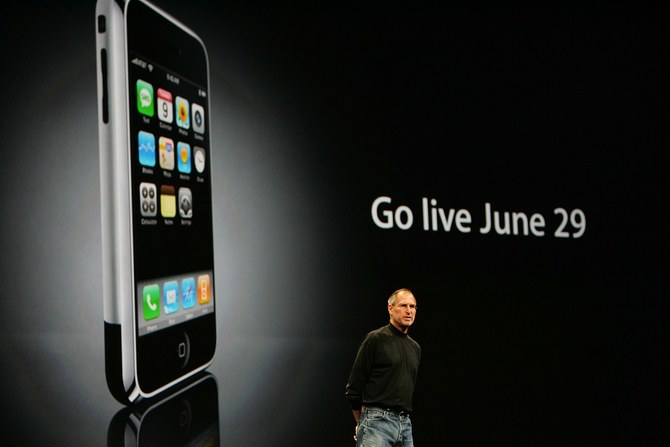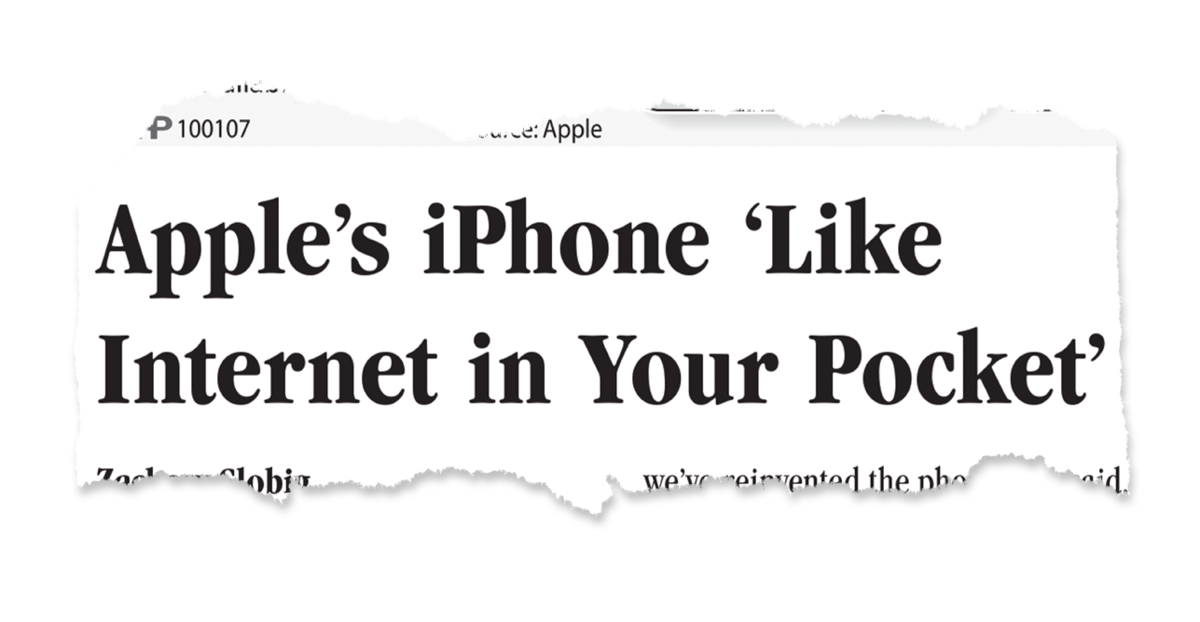- ARAB NEWS
- 30 Jun 2025

Arkan Aladnani
The smartphone first announced by Jobs has evolved to become a staple of everyday life
On Jan. 9, 2007, Apple’s Steve Jobs unveiled the iPhone, a revolutionary three-in-one music player, phone and internet device that changed the way the world works and plays. It was released for sale on June 29, 2007.
Jobs, whose biological father was born in Syria and studied at the American University of Beirut, made Apple the world’s leading technology company. Seven years after his death in 2011, Apple became the first public company valued at $1 trillion.
LONDON: On Jan. 9, 2007, Apple’s co-founder and former CEO Steve Jobs unveiled the iPhone, describing it as a three-in-one device combining an iPod, a phone and an internet communicator. With a 3.5-inch screen, a 2-megapixel camera and 16 gigabytes of storage, it did not even support third-party apps back then, yet life has not been the same since its launch.
This was not the first mobile “smartphone” with a large touchscreen and internet connectivity, but it was the most elegant, putting user experience at the heart of usability and design. Today, more than 5 billion people worldwide use mobile services, according to GSMA Intelligence. A whole generation does not know what life was like before the iPhone.
The extent to which this revolutionary device took the world by surprise 13 years ago was reflected in the fact that in its issue of Jan. 11, 2007, Arab News covered the iPhone’s launch not on its front page but on page 18, in its Economy section. It did so, however, with a prescient headline. The iPhone, it proclaimed, was “like the internet in your pocket.”

“To demonstrate, (Jobs) accessed Google maps satellite imaging and within seconds zoomed in on the Washington Monument, then the Eiffel Tower, and finally checked Apple’s rapidly rising stock. He also phoned a local coffee bar and jokingly ordered 4,000 lattes for his assembled guests.”
From an AFP story about the Apple announcement at the Macworld Conference and Expo in Arab News’ Economy section on Jan. 11, 2007
Nowadays, everything can be done through a smartphone, including work, communication, shopping, traveling, finances and entertainment. This Apple product has made our lives simpler since its inaugural release in 2007. Its features and apps have replaced CDs and DVDs, and changed the way we watch TV. News channels have had to keep up with it, launching digital services for a generation of picky and selective audiences.